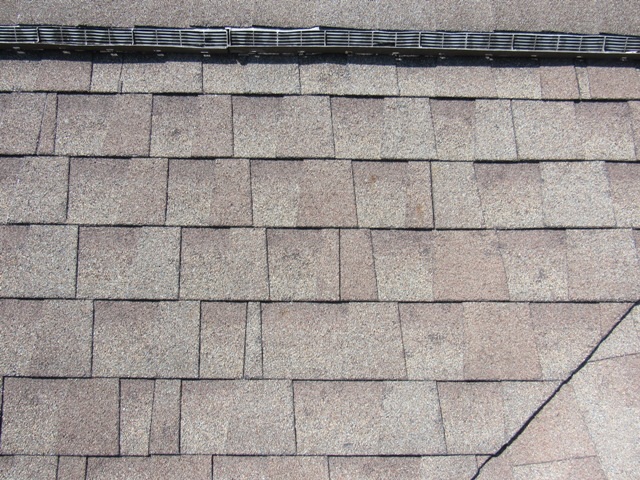

Ever wonder why Central Texas experiences hail so often in the spring? Our proximity to the West Texas dry line makes our area more susceptible to destructive hail events. Hail develops in thunderstorms, especially organized supercells, when the raindrops are transported on updrafts into the cold air at the top of the storm where they freeze. Updrafts and downdrafts in the storm carry the newly formed hailstone up and down, adding frozen layers until it gets too heavy and falls out of the storm. The stronger the storm, the larger the hail it can support.
The larger the hailstone, the more destructive its impact energy. Wind driven hail has increased impact energy and can be more destructive. Warnings are issued for storms with the potential to create quarter size hail or larger. Even smaller hailstones have the potential to cause damage to a roof’s surface as repeated exposure to hail can cause damage over time.

Different roof materials vary in their resistance to hail damage depending on the type of roof, quality of materials, the protective coating, the roof’s age, the temperature of the roof at the time of hail impact, and the density of insulation directly beneath the roof. There are different types of damage that can occur to an asphalt shingle roof during a hailstorm. The first that we’ll discuss here is granule loss.
Asphalt shingles are composed of a durable fiberglass mat, covered with a waterproof asphalt coating which is topped with a layer of pigmented granules. The granules protect the shingle from the elements, help the roof shed water, reflect the sun’s damaging UV rays, and provide the beautiful color of your roof. When you lose granules from your shingles due to a severe hailstorm, or repeated exposure to hail, your roof becomes susceptible to leaks.
Hailstones have the potential to fracture or expose the shingle’s fiberglass mat. Exposed or fractured matting is vulnerable to the elements, meaning that damage to the roof can worsen over time. Exposed matting is generally visible following a hailstorm.
In addition to nails, asphalt shingles have an adhesive layer to help hold them in place. Hail damage contributes to erosion of this adhesive, which leads to the loss of the seal. When the shingles’ adhesive seal is compromised, there is an increased risk of shingle blow off during high winds.

It’s important to have your roof inspected after a hailstorm. The roof damage discussed above is best documented by a roofing professional immediately following a storm. It is true that you have time to file an insurance claim for a roof damaged by hail, however, the longer you wait the more difficult it can be for an insurance adjuster to identify damage. Exposed matting can fade in the sun, making hail impacts more difficult to identify. If the adjuster has trouble connecting your roof damage to a hailstorm, you may find it difficult to get the coverage you need from your homeowner’s policy. If your roof is compromised after a storm and goes without repair or replacement it can more easily be damaged by weather, excessive temperatures, and wildlife.
At Orbit Roofing, we identify present and past hail damage and help you move through the insurance claim and roof replacement process with ease. We specialize in replacing your roof quickly and professionally with minimal disruption to your daily life. We install premium roofing systems to fit your style and budget, providing maximum protection for your property. Call us today at 844.211.7744 for your roof inspection and consultation.




